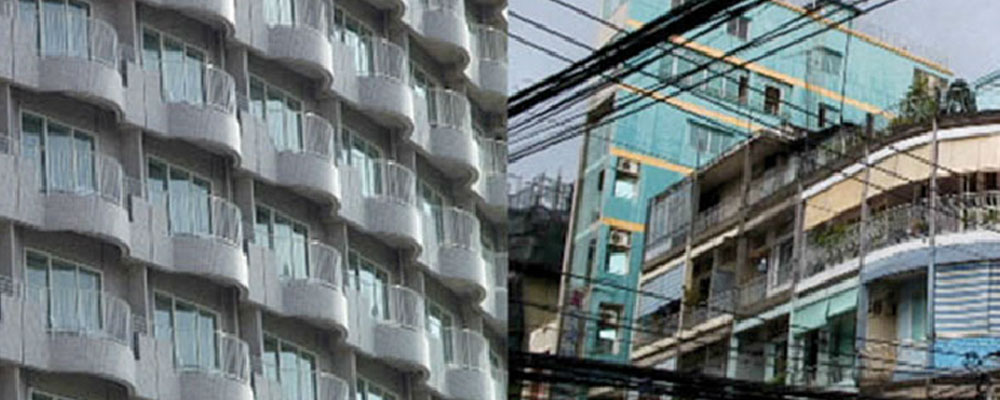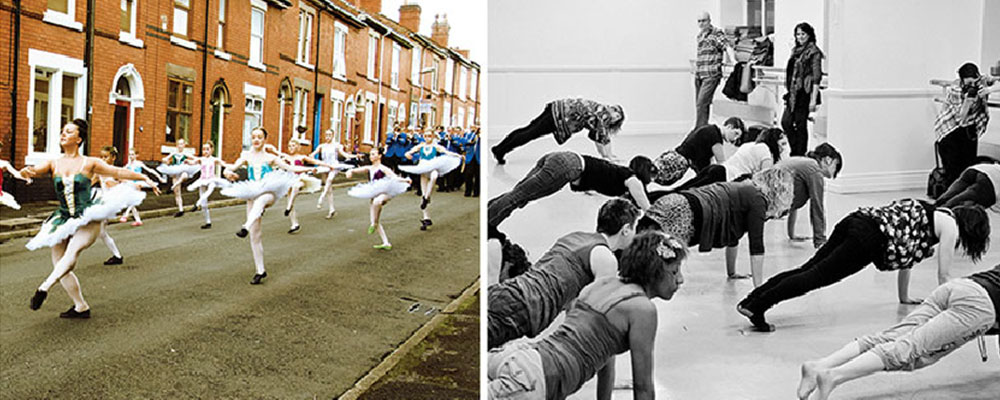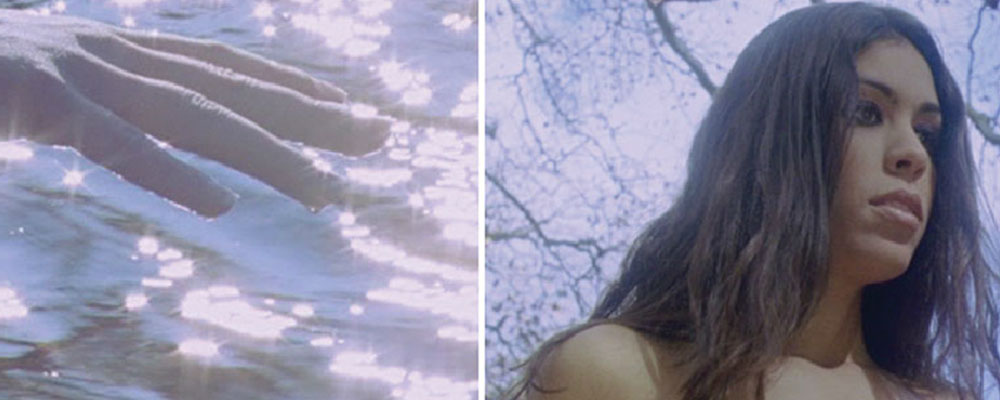Katarina Zdjelar, My Lifetime (Malaika), 2012
Hong-An Truong & Dwayne Dixon, The City & The City , 2010
Marinella Senatore, Rosas - The Attic #2 , 2012
Eric y Marc Hurtado, Jajouka, something good comes to you, 2012
Katarina Zdjelar, My Lifetime (Malaika) / Mi vida (Malaika), 2012

My Lifetime (Malaika), 2012. Video HD, length: 15´, courtesy of the artist. Presented by Belgrade Cultural Center, Serbia
In most of her videos, Zdjelar examines and deals with different forms of communication processes so-called "semiosphere" (J. Lotman), which include language, but above all the socio-cultural context in which it operates and is implemented.
In her video My lifetime (Malaika) "Katarina's language" is the sound of instruments, produced by the hands of the National Symphony Orchestra of Ghana musicians, with the sound being detached from the will and the presence of those producing it. It seems as if it fails to be a part of the harmony, either as the act of performance or as the symbolic sphere within which this "musical formation" should represent a platform for the development of the "new state."
Namely, when Kwame Nkrumah, the first president of the state of Ghana, initiated the establishment of a symphony orchestra in 1959, Ghana was celebrating the second anniversary of Ghana's independence, an act that in itself symbolically represented a platform for future upgrade and promotion of the African identity, since it was the first country on the African continent freed from colonial rule. However, due to the progressive lack of support, interest and competition, musicians from the said orchestra were forced to work on other jobs, which was the reason they were coming tired to their, only four hours long rehearsals. Nevertheless, giving meaning to individual histories of the National Symphony Orchestra of Ghana performers would be as cruel as the act of colonization.
Therefore, even though we have the feeling of liking and empathy for these musicians, "caught up in the trap of contemporary time" while they perform the famous Swahili love song, we are in fact indifferent. We wonder who ever needed to establish the symphony orchestra in Ghana, and why? Is it not yet another example of propaganda, rhetoric and demagogic tool used for the acquisition and/or preservation of political power, demonstrated and consumed in another, non symbolic, "realistic" plane of reality (I Colovic); The reality where Zdjelar examines the limits of power over symbols in different socio-cultural contexts, and where she is, sometimes, an "alien" as well.
Zorana Dakovic Minniti
Katarina Zdjelar (Belgrade, 1979) is an artist based in Rotterdam. Her practice consists of making video pieces, sound pieces, book projects and creating different platforms for speculation, knowledge building and exchange.
Her work explores notions of identity, authority and community and revolve around individuals who challenged by simultaneous inhabitation of different languages, perform themselves through practicing, remembering or reinventing
themselves.
Hong-An Truong & Dwayne Dixon, The City & The City / La Ciudad y La Ciudad, 2010
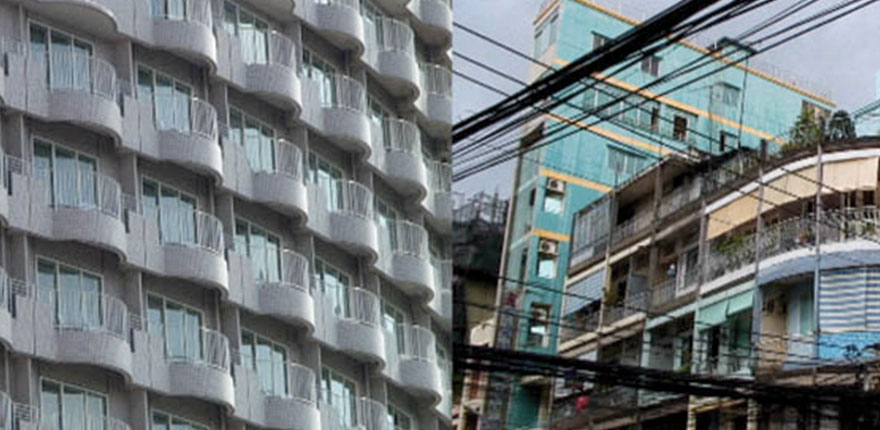 Hong-An Truong & Dwayne Dixon, The City & The City. Video, length: 18, courtesy of the artists. Presented by Hanoi Doclab, Vietnam
Hong-An Truong & Dwayne Dixon, The City & The City. Video, length: 18, courtesy of the artists. Presented by Hanoi Doclab, Vietnam
The destructive character sees nothing permanent.
-Walter Benjamin
East by Southeast, Tokyo and Saigon share a history of destruction and occupation while also displaying various forms of shifting Asian urbanism. Modern warfare generated the radical conditions for architectural, political and social change in both cities, but how do we discover the traces of this shared history after intense postmodern re-imaginings concomitant with relentless construction of capitalist space? This video references China Mieville’s baroque urban fiction in an exploration of Tokyo and Saigon that operates on the mechanics of the ethnographic, the documentary, and the performative. Like Benjamin’s dense notations on modernity’s environments, the video accumulates in passages, splitting the screen in views of the cities’ urban topographies. How do we know the cities have changed, coming upon them like this? Do cities travel anywhere after time passes in vortexes of war, occupation, revaluation, demolition and ecstatic construction? The video fails to record the deep archaeology of Asia’s urbanism. Instead, fantastic cityscapes rendered in split minutiae emerge from Tokyo and Saigon’s strangely dissembled histories after modernism has fled.
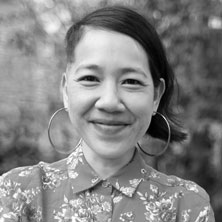 Hong - An Truong is a graduate of the Whitney Museum Independent Study program and received her MFA from the University of California, Irvine. Most recent experimental pedagogical collaborations include The Gramsci Project with students at Laguardia Community College, New York (2010), and Acting the Words is Enacting the Worlds with Huong Ngo and students at EFA Project Space in New York (2011). Her work has been shown at Art in General, New York (2009), PAVILION, Bucharest (2010); the International Center for Photography, New York (2010), Monte Vista Projects, Los Angeles (2010), Agape Enterprise, Brooklyn, New York (2012), Berrie Center for the Arts, New Jersey (2012), and Green Papaya Art Projects, Manila, Philippines (2012), among other venues. She is a current recipient of an Art Matters Foundation Grant (2012).
Hong - An Truong is a graduate of the Whitney Museum Independent Study program and received her MFA from the University of California, Irvine. Most recent experimental pedagogical collaborations include The Gramsci Project with students at Laguardia Community College, New York (2010), and Acting the Words is Enacting the Worlds with Huong Ngo and students at EFA Project Space in New York (2011). Her work has been shown at Art in General, New York (2009), PAVILION, Bucharest (2010); the International Center for Photography, New York (2010), Monte Vista Projects, Los Angeles (2010), Agape Enterprise, Brooklyn, New York (2012), Berrie Center for the Arts, New Jersey (2012), and Green Papaya Art Projects, Manila, Philippines (2012), among other venues. She is a current recipient of an Art Matters Foundation Grant (2012).
Artist Statement here: http://www.hongantruong.com/index.php?/statement/
Dwayne Dixon Dwayne Dixon is a PhD. candidate in the Dept. of Cultural Anthropology at Duke University where he is completing his dissertation on young people in Tokyo and their relations to urban space, changing economic conditions, and visual technologies.
Marinella Senatore, Rosas - The Attic #2, 2012
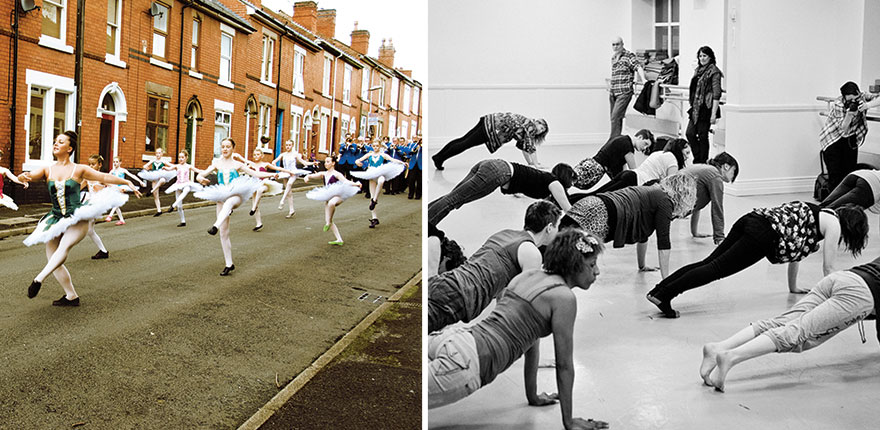 Marinella Senatore, Rosas - The Attic #2, 2012. Video HD , length: 30´, courtesy of the artist. Presented by GAMeC, Bergamo
Marinella Senatore, Rosas - The Attic #2, 2012. Video HD , length: 30´, courtesy of the artist. Presented by GAMeC, Bergamo
ROSAS - The Attic #2 is the second chapter of the trilogy by Marinella Senatore, following the first one in Berlin and its conclusion in Madrid. The central chapter, filmed in Derby in the heart of England, marks the climax of what Rosas actually represents: not a video but a more important process of shared collective creation attempted by a contemporary artist.
Using newspapers, radio stations and announcements in stadiums to involve the numerous local communities, amateur filmmakers, photographers, theatre groups, activists, artists, actors, musicians and dancers, in this second chapter Marinella has managed to bring together over 16,000 people who have not only created, staged, directed and acted, but effectively are ROSAS. Therefore, we need to start with the end of the video, with the closing credits that sum up what is not merely a simple organizational effort, but the very core of Marinella’s artistic work, which calls the artist’s role into question and updates it: not merely as the centralizing figure of an idea, but the activator of a participatory process, the coordinator of numerous groups and the promoter of workshops. An artist who does not impose but accepts and channels the needs and desires of the social fabric in which it acts, facilitating exchange and knowledge among people, the intersection of public and private memory, and the interaction of different generations.
For these reasons, ROSAS is not merely a video, but a dynamic community experience – it is named after a Belgian travelling dance company – in which many of the people involved travelled to Spain, Germany and England to complete the work. At the end of the project the artist decided to leave the set and technical equipment she used at the complete disposal of the local organizations.
ROSAS - The Attic #2 is a great work of social art in which what exists surpasses what can be seen, and where what can be seen illuminates what exists. Because of this fundamental aspect it becomes the limelight, inevitably Caravaggesque in its beam of pure humanity. The story seemingly develops without a specific logic: only at the end does the spectator have all the elements needed to assemble the narrative puzzle. Just as in the other the other two episodes, with an epidemic and earthquake, it is a traumatic event – here a car accident involving a little girl – that suddenly orients the story.
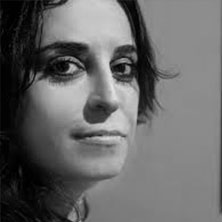 Marinella Senatore is a filmmaker and artist. She works with video, photography, drawing, installation and sound. In her projects, often developed in collaboration with institutions as museums and universities, she involves entire communities in the creative process (i.e. a community of retired miners from Enna, Sicily; more than 20000 citizens from Derby, UK, Berlin and Madrid; 300 Lower East Side residents in NYC, 500 workers of Venice, 1800 citizens of Madrid, among others). The public is involved as co-writer, actor, set designer, camera operator, director, dramatist, coach, choreograph, teacher …sharing time, experiences and skills, acquiring new knowledge in an atmosphere of ongoing workshop, in contact with the contents they find in their environment and according to the level of involvement and their backgrounds. Connecting personal events with collective processes, fact and fiction, her projects encompassed a whole variety of relations, something that involves negotiations, between the instigator (the artist), the participants, the geopolitical context, etc. negotiated in the public sphere, fostering the construction of an archive of shared narratives that creates a sense of community.
Marinella Senatore is a filmmaker and artist. She works with video, photography, drawing, installation and sound. In her projects, often developed in collaboration with institutions as museums and universities, she involves entire communities in the creative process (i.e. a community of retired miners from Enna, Sicily; more than 20000 citizens from Derby, UK, Berlin and Madrid; 300 Lower East Side residents in NYC, 500 workers of Venice, 1800 citizens of Madrid, among others). The public is involved as co-writer, actor, set designer, camera operator, director, dramatist, coach, choreograph, teacher …sharing time, experiences and skills, acquiring new knowledge in an atmosphere of ongoing workshop, in contact with the contents they find in their environment and according to the level of involvement and their backgrounds. Connecting personal events with collective processes, fact and fiction, her projects encompassed a whole variety of relations, something that involves negotiations, between the instigator (the artist), the participants, the geopolitical context, etc. negotiated in the public sphere, fostering the construction of an archive of shared narratives that creates a sense of community.
http://www.marinella-senatore.com/
Eric y Marc Hurtado, Jajouka, something good comes to you / Jajouka, algo bueno viene a ti, 2012
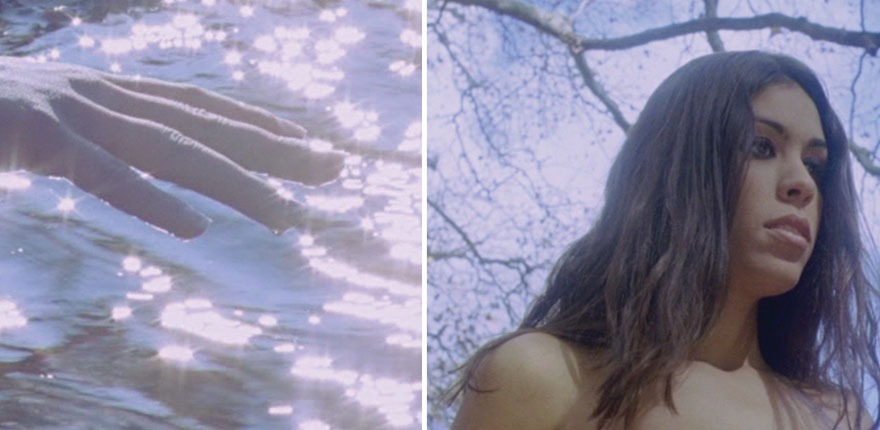
Jajouka, something good comes to you, 2012. Video, length: 60´, courtesy of the artists. Presented by Cinematheque de Tanger, Tanger Marruecos
As a thorn upon silk
-Women’s chant of Jajouka-
Jajouka is a small village located in the hills of the Moroccan Rif. For over 2000 years they perpetrated magical rituals of fertility, the rituals of Pan, similar to roman Lupercales, as well as a unique music played by a brotherhood of musicians, The Master Musicians of Jajouka.Following the footsteps of Paul Bowles, Brion Gysin and Brain Jones, Eric and Marc Hurtado (founders of the group Etant Donnés) set off to film these adorators of Pan, these musicians who use their music for making miraculous healings witch take place at the tomb of the SaintSidi Ahmed Cheik.The film is polarized in the attraction between Bou- Jeloud (The father of Skin, Pan) and AïshaKandisha, female demon, goddess of the night and sources.A film of a violent poetry, balanced between documentary and fiction where the action is rooted in the trance of celebration and musical dementia, reflecting itself in a chid's tear , a flame, an eternal chant of women addressed to Man in the sky.
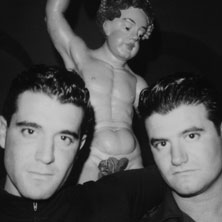 Eric y Marc Hurtado. Born in Rabat, Morocco, Eric and Marc Hurtado founded in 1977 the group Etant Donnés that quickly became essential in the field of experimental film, performance and music concrete and experimental. Numerous collaborations with major artists of the international avant-garde music (Alan Vega, Genesis P.Orridge, Michael Gira, Lydia Lunch ...) Participation in prestigious festivals and exhibitions in Europe and the United States, Kassel Documenta 8, The Kitchen NYC, Matresss Factory Pittsburg, Baltic Centre for Contemporary Art Newcastle, Sonar Barcelona ,International Contemporary Art Biennale de Lyon, Centre Pompidou ,Foundation Cartier , Etrange Festival Paris, Transmusicales Rennes, Berlin Atonal. The films of Marc Hurtado went to Lorcano Festival in Swiss ,Luff festival in Lausanne, Microscope Gallery in New York, Stededelijk Museum in Amsterdam, Cultural Arts Council of Houston and several retrospectives were dedicated to his films in the Festival du Réel in Centre Beaubourg in Paris and Cinematheque Francaise in Paris. His film BLEU is part of the collection of the Centre Beaubourg , AURORE of Museum of Modern Art of Villeurbanne and L’AUTRE RIVE of the Museum of Modern Art in Grenoble. Marc Hurtado has exhibited his paintings and videos in La Galerie du Jour in Paris, Le Confort Moderne in Poitiers, the Microscope Gallery in New York, Laurent Godin in Paris.Eric Hurtado had exhibited his photos in the Galerie AMU in Prague, the Musée des Abattoirs in Toulouse, the Biennale Internationale d'Art Contemporain in Lyon, the Consortium in Dijon, Art en Ile in Genève, Museum of Chambéry and the Museum of Grenoble.
Eric y Marc Hurtado. Born in Rabat, Morocco, Eric and Marc Hurtado founded in 1977 the group Etant Donnés that quickly became essential in the field of experimental film, performance and music concrete and experimental. Numerous collaborations with major artists of the international avant-garde music (Alan Vega, Genesis P.Orridge, Michael Gira, Lydia Lunch ...) Participation in prestigious festivals and exhibitions in Europe and the United States, Kassel Documenta 8, The Kitchen NYC, Matresss Factory Pittsburg, Baltic Centre for Contemporary Art Newcastle, Sonar Barcelona ,International Contemporary Art Biennale de Lyon, Centre Pompidou ,Foundation Cartier , Etrange Festival Paris, Transmusicales Rennes, Berlin Atonal. The films of Marc Hurtado went to Lorcano Festival in Swiss ,Luff festival in Lausanne, Microscope Gallery in New York, Stededelijk Museum in Amsterdam, Cultural Arts Council of Houston and several retrospectives were dedicated to his films in the Festival du Réel in Centre Beaubourg in Paris and Cinematheque Francaise in Paris. His film BLEU is part of the collection of the Centre Beaubourg , AURORE of Museum of Modern Art of Villeurbanne and L’AUTRE RIVE of the Museum of Modern Art in Grenoble. Marc Hurtado has exhibited his paintings and videos in La Galerie du Jour in Paris, Le Confort Moderne in Poitiers, the Microscope Gallery in New York, Laurent Godin in Paris.Eric Hurtado had exhibited his photos in the Galerie AMU in Prague, the Musée des Abattoirs in Toulouse, the Biennale Internationale d'Art Contemporain in Lyon, the Consortium in Dijon, Art en Ile in Genève, Museum of Chambéry and the Museum of Grenoble.
http://www.etant-donnes.com/
